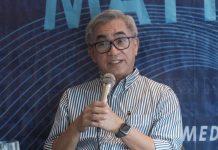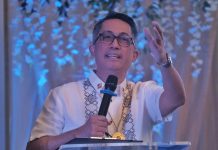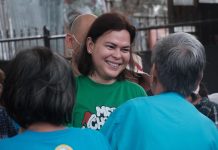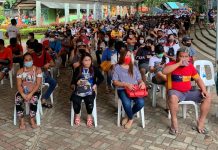Tier1 will be bringing 100 MBPS internet connection to the underserved areas in the Philippines by installing 50,000 towers within the term of President Rodrigo Duterte.
The project will commence on January 29, 2018.
“We are going to focus on the underserved areas in Mindanao; in fact we are focusing on ARMM (Autonomous Region in Muslim Mindanao),” said Jonathon B. Stevens Board Chairman of the Tier1 during the AFP-PNP Media Press Corps Southern Mindanao Press Briefing at the Royal Mandaya Hotel on January 10, Wednesday.
Teir1 will also focus on the underserved connectivity that is required by the Armed Forces of the Philippines, Philippine National Police, hospitals, schools and local government units.
This project has a budget of 1.5 billion to 2 billion dollars. He said that ARMM is considered to be the most underserved area in the country. Tier1 will build for the government a brand new 100 MBPS high speed network in the ARMM compound consisting of 52 government buildings to bring them up to international high speed status.
Tier1 has a strategic partnership with Parallel Wireless, a Boston based company and Finland based Nokia. China based ZTE also expressed interest in partnering with Tier1 to build totally new Philippine National Broadband Network with a large Davao City based data Storage center.
“We stepped up to consortium large enough to handle the deployment of telecom not only in Davao but Nationwide. We pulled together our consortium companies from USA, Europe, China, South Africa and Australia and in this partnership we are committed and all our partners have agreed and approve to put 50,000 towers for the next five years,” he said.
The consortium includes South African based Onxy Connect, one of only 45 members globally who have partnerships with Google, have agreed to support Tier1 “One Dot Mobile Brain in every school” project which was unveiled at the Asian Development Bank, Asian Development Bank (ADB) 2nd financial congress.
He said that these towers can stream 38 kilometers by wireless connection and they are small solar powered and are self-contained towers that can fit into the rooftop of the companies and government buildings to achieve security and avoid long negotiations on land rentals and right of way as well as on going rental costs.
The billing to government or local government unit will be fixed wireless and also provided at a discount and pre-paid cards or e-load for government workers and general public.
He said that they will achieve in two years what Globe and Smart has done for the past 24 years and that is to put up 20,000 towers in the country.
“The equipment is from Israel, United States of America and from Australia, and the equipment is already been paid for. So we are seriously talking about starting within the month of January to build this network,” he said
“We have a program that we will put (even in the Department of Education) mini towers on every Police Station, every first responding station and in AFP stations., these towers needs to be disaster proof, self-contained, solar backed up at least three days so whatever happens the first responders whatever they be are able to connect to their other agencies,” he added.
He said if Tier1 will place one mini tower in every school the first benefit is that school will have fabulous connectivity.
Tier1 has a product called “Dot Mobile Brain”, manufactured by Tier1 partnered with “Spiderfi”, is a proprietary hardware five terabyte offline node that holds, under license the entire Wikipedia, World Book Encyclopedia and National Geographic documentaries, able to access totally for free by students with any smart device, 24 hours a day.
“We plan to put one in every school and put a free tower on top of that school to make sure that the students have 24/7 cellular and broadband access. That is that type of product that we can put up in days its not eight months per one,” he said
“it is called a micro cell towers. they is much more powerful, they have a longer range, it is intelligent, they self-propagate, meaning to say they network with each other so when you start building out a lot like that cell towers talk to each other and move signal around to the underserved areas,”
This will be installed in both public and private and perhaps several in larger schools or universities.






